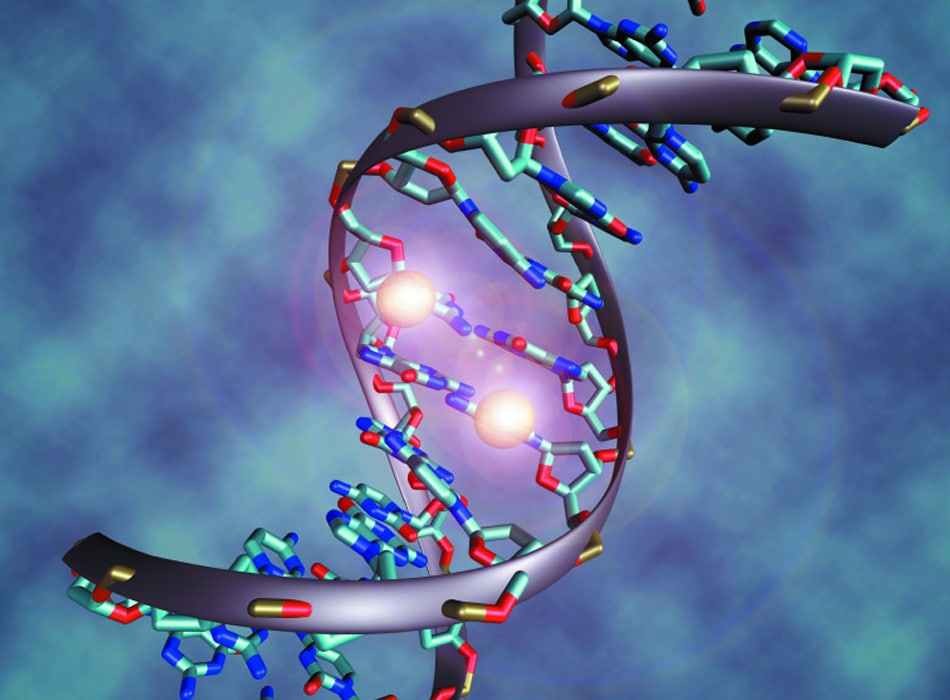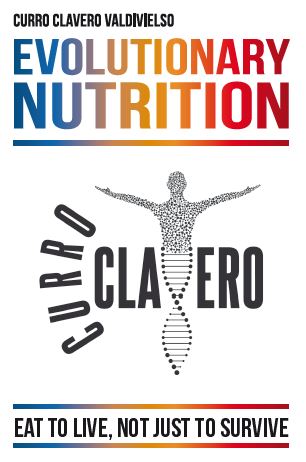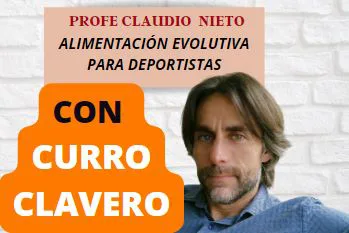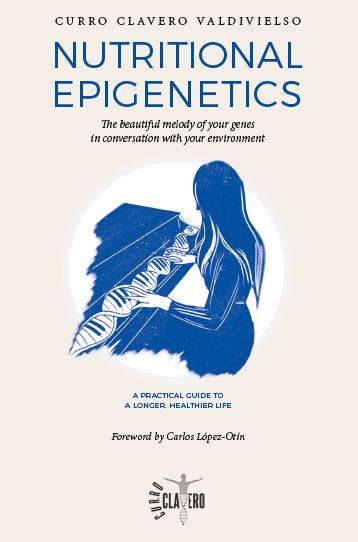In Evolutionary Nutrition, my first book published in Spanish two years ago, I made the case for a nutritional approach aligned with our history as a species: a diet based on natural foods, low in carbohydrates, combined with intermittent fasting. This is a radically different pattern from the one most people follow today, which pushes us to eat between three and five times a day—mostly ultra-processed products: calorie-dense but nutrient-poor. Refined flours, sugars, seed oils, additives, and an unnatural mix of macronutrients—like carbs combined with fat—engineered for one purpose: to make us eat more.
What I wrote in 2023 was grounded in the best scientific evidence available at the time—and that evidence was already solid. But since then, new studies have emerged that not only confirm what we knew, but make the case for this approach even stronger. And they’re worth sharing.
Let’s start from the beginning.
What Are Intermittent Fasting (TRE) and Low-Carb Diets?
Intermittent fasting isn’t a diet—it’s an eating pattern that alternates between periods of food intake and periods of fasting. There are several ways to do it, but one of the most well-known is Time-Restricted Eating (TRE).
As the name suggests, it involves eating all your meals within a limited daily window—typically 8 hours—and consuming no calories during the remaining 16 hours, including sleep. In other words, the day is divided into three 8-hour blocks: one for eating and two for fasting. A practical example: finishing dinner at 9:00 p.m. and not consuming any calories again until 1:00 p.m. the next day—only allowing calorie-free beverages like water, coffee, or tea during the fasting window.
A low-carb diet, on the other hand, means reducing (not completely eliminating) foods high in carbohydrates—especially those that entered the human diet relatively recently with agriculture: grains, tubers, and legumes. It also means avoiding industrial products—which are not real foods—with an even higher carb content, due to the use of refined flours and sugars.
To understand how well adapted we are to these foods from an evolutionary perspective, let’s do some simple math. If we take the 300,000-year history of Homo sapiens—during which our nutritional needs and physiology have remained relatively stable—here’s how long we’ve been exposed to high-carb foods:
• Agriculture since the Neolithic (~10,000 years): just 3.3% of that time.
• Industrial ultra-processed products (~75 years): only 0.025% of that time.
The more recent a food’s arrival in our diet, the less evolutionary pressure we’ve had to adapt to it. So, while there’s been some adaptation to agricultural foods, ultra-processed products are such a recent novelty that we simply haven’t had enough evolutionary time to develop meaningful adaptive mechanisms.
General Benefits of Intermittent Fasting: What We Already Knew
When I wrote Evolutionary Nutrition, the scientific literature on intermittent fasting was already overwhelming. Even so, I chose to highlight just one key study in the book—a landmark paper published in December 2019 in the New England Journal of Medicine, authored by Rafael de Cabo and Mark Mattson from the U.S. National Institute on Aging and Johns Hopkins University. This study summarized the existing scientific evidence at the time, and these were the benefits associated with intermittent fasting:
At the cellular level:
• Resistance to oxidative stress: triggers an adaptive response that strengthens antioxidant defenses, DNA repair, and mitochondrial function.
• Autophagy: stimulates the removal and recycling of damaged molecules, contributing to cellular cleanup and reduced inflammation.
• Brain: enhances function and increases resilience to damage.
General health and aging:
• Improves both overall life expectancy and, even more importantly, healthspan—the years lived free of disease.
Physical and cognitive functions:
• Increases endurance, balance, and coordination.
• Promotes fat loss while preserving muscle mass (especially with 16-hour fasts).
• Enhances cognitive performance: spatial, working, and associative memory.
• Reduces neuroinflammation.
Metabolic diseases:
• Decreases body fat and insulin resistance.
• Helps manage type 2 diabetes and obesity.
Cardiovascular health:
• Lowers blood pressure, resting heart rate, cholesterol, triglycerides, and blood glucose.
• Reduces inflammation and oxidative stress—both key drivers of atherosclerosis.
• Increases GABA neurotransmitter levels and heart rate variability, supporting parasympathetic nervous system dominance.
Cancer:
• Reduces the occurrence of spontaneous tumors.
• Inhibits the growth of various tumor types.
• Enhances the effectiveness of chemotherapy and radiation therapy.
• Protects healthy cells while selectively impairing the energy metabolism of cancer cells.
Neurodegenerative diseases:
• Slows the progression of Alzheimer’s and Parkinson’s.
• Increases neuronal stress resistance through autophagy, neurotrophic factors, and DNA repair.
Asthma:
• Decreases respiratory symptoms and airway resistance.
Multiple sclerosis:
• Alternate-day or three-day fasting reduces autoimmune demyelination and improves both symptoms and motor function—in as little as two months.
Rheumatoid arthritis:
• Reduces inflammation, leading to functional improvements.
Ischemic injuries and surgeries:
• Fasting beforehand lessens tissue damage and inflammation, promoting better post-operative recovery.
Intermittent Fasting Combined with a Low-Carb Diet: New Research.
Metabolic Health Benefits (Weight and Diabetes)
A recent clinical trial published in 2022 examined the effects of combining time-restricted eating (an 8-hour intermittent fasting window) with a low-carbohydrate diet in individuals with metabolic syndrome. The results were clear: the combination of both strategies was more effective than either one alone.
The study lasted three months, during which participants did not change their physical activity levels. Yet, they experienced significant improvements in weight, abdominal fat, blood glucose, lipid profiles, and other key metabolic markers.
Here’s a summary of the benefits observed:
Body Composition Changes:
• Average total body weight loss of 11 pounds (5 kg), greater than with fasting or diet alone.
• Reduction in visceral fat (the most harmful to health).
• Decrease in subcutaneous fat.
• Lower overall fat mass without loss of muscle mass.
• Reduced waist and hip circumference.
• Improved Body Mass Index (BMI).
Glucose Metabolism:
• Lower fasting blood glucose levels.
• Reduction in glycated hemoglobin (HbA1c).
• Lower fasting insulin levels, indicating reduced pancreatic strain.
• Improved insulin sensitivity (the body responds better to insulin).
Other Metabolic Markers:
• Decrease in uric acid—associated with insulin resistance and gout risk.
• Significant drop in blood triglycerides.
• Increase in HDL cholesterol.
• Improved triglyceride-to-HDL ratio—a key marker of cardiovascular risk.
Blood Pressure and Tolerance:
• Reduction in diastolic blood pressure, with no adverse effects on systolic pressure.
• Overall improvement in cardiometabolic profile without medication or added exercise.
• No serious side effects and good participant tolerance.
Benefits for the Heart and Thyroid
A follow-uo study published in 2024 reexamined the same intervention—intermittent fasting combined with a low-carb diet—but this time focused on its effects on heart muscle health and thyroid function.
After three months of intervention, the observed benefits were as follows:
Cardiovascular Health (Heart Muscle Status):
• Reduction in creatine kinase (CK): This enzyme is associated with muscle damage and energy metabolism. A decrease suggests a protective effect on both the heart and skeletal muscles.
• Decrease in other cardiac enzymes:
- Lactate dehydrogenase (LDH)
- Creatine kinase MB (CK-MB)
- Hydroxybutyrate dehydrogenase (HBDH)
These enzymes are typically released when the heart or muscles are under stress or damaged. Their decline indicates improved cardiovascular health and muscular metabolism. In other words, the benefits extended beyond weight loss or blood sugar control: the internal health of key organs, especially the heart, also improved.
Thyroid Function:
• Reduction in TSH (thyroid-stimulating hormone): Elevated TSH often signals thyroid dysfunction. A drop is a positive sign.
• Decrease in total and free T3 (FT3): Reflects an adaptive reduction in energy expenditure, commonly seen in fasting or low-carb conditions.
• Increase in free T4 (FT4): Typically interpreted as improved thyroid gland function.
• Lower T3/T4 ratio: Indicates reduced conversion of T4 to T3—a healthy adaptation in the context of weight loss and improved metabolic function. In short, the thyroid is responding intelligently to the new metabolic environment.
Intermittent Fasting and Evolutionary Nutrition Combined with Other Ancestral Habits: Reversing Biological Age
We all have two ages: chronological age—the one printed on our ID—and biological age, which reflects the actual condition of our cells. For example, someone who is 50 years old chronologically could be biologically 60… or 40.
Well, it’s been shown that intermittent fasting, when combined not only with Evolutionary Nutrition—a diet rich in vegetables, fruits, antioxidants, polyphenols, probiotics, prebiotics, high-quality protein and fats, and low in carbohydrates—but also with physical exercise, breathing and relaxation techniques that reduce stress, and proper sleep, can actually reverse biological age.
In other words, it doesn’t just slow down aging—it can rejuvenate the body
This conclusion comes from a study published in 2021, conducted in collaboration with several universities in the U.S. and Canada. After just eight weeks of applying these interventions, participants reduced their biological age by 3.23 years, as measured by DNA epigenetic age markers.
We’ve come a long way from the days when our ancestors ate only when they could and only what nature made available. Today we have more choices than ever—along with more confusion than ever.
During my formal training, I was taught—as many still are—that:
• Carbohydrates should be the primary macronutrient.
• Fat should be avoided; go for low-fat and “light” everything.
• Grains are an essential food group.
• You should eat between 3 and 5 times a day.
These recommendations are still promoted by official institutions, yet to this day, I have not found a single piece of solid scientific evidence showing that these guidelines actually improve health. Not one.
Going back to simple patterns that align with our evolution and biology isn’t nostalgia—it’s intelligent progress.
It’s not about following trends; it’s about doing what makes sense.
It’s not about blindly repeating what we’ve “always been told.” It’s about choosing what works. About letting go of mantras—and finally listening to science.
And to our own bodies.







